Branding Inside Out
Aligning Corporate Culture with Brand Strategy
Brand (what outsiders think of your organization) and culture (what insiders think of you) are two sides of the same coin – interconnected, intertwined and inseparable.
Most people think branding is simply a marketing exercise, but at Blackink we know that brand strategy is fundamentally based on a company’s business strategy, and what turns it into a “brand” is when we infuse that strategy with the company’s natural culture, and in doing so we establish a system that everyone can follow, believe in and act upon.
Businesses usually see marketing as a primary focus for attention, development and investment, but they tend to neglect their internal audiences who are just as important.
It is crucial in this day and age for brands to ensure there are no gaps between how their products, customer service, personnel, and advertising all match up from the actual customer’s experience and perspective. After all, once a brand makes a promise, the company depends on its front-line employees to deliver on that brand experience, and those guys are driven by the back-end employees.
A Tale of Two Idiots
Back in 2009, two Domino’s employees filmed themselves adding some “extra” toppings to the pizza they were preparing. Now this happened in a small outlet somewhere in North Carolina but after the employees posted the film to YouTube, the story spread like wildfire and, in a matter of days, the video got over 1 million views—putting Domino’s into full crisis mode. “We got blindsided by two idiots with a video camera and an awful idea,” Domino’s spokesman Tim McIntyre said later. “That was really unfair.” – and too right! When an entire multinational organization has to suddenly deal with a PR and marketing nightmare because of “two idiots” it can cost millions in sales, not to mention general embarrassment across all employee levels and departments and the mistrust (and shaming) of the general public, which can take years to earn back.
More recently, Starbucks found itself in hot water after an incident that occurred in downtown Philadelphia in April. A manager called police to arrest two African-American men for trespassing after noticing the two men hanging out without buying anything; both were taken away in handcuffs even as fellow customers protested that they hadn’t done anything wrong. When it turned out the two men had just been innocently waiting for a friend, Starbucks was branded racist overnight. People led very loud protests in several while every talk show host and news anchor shamed Starbucks to oblivion. Starbucks responded swiftly however, and decided to close down more than 8,000 stores as well as its corporate office for racial bias training – at the cost of $12 million!
Engaged Staff = Brand Ambassadors
Think of a customer service rep who didn’t know much about the product they were selling, or the supermarket employee who was unaware of the special promotion or in which aisle a certain product was – you don’t forget that kind of frustration do you? Employees are a direct reflection of your brand – its efficiency, responsiveness and customer focus. When you promise your customer something and then an employee fails to deliver on that promise, it can damage both your reputation and your bottom line.
According to new Gallup research, only 29% of millennials are engaged in their jobs, and only 27% believe in their companies’ values. In fact, the majority of millennials don’t understand their organizations’ purpose—only 1 in 3 agree that the purpose of their organization makes them feel important. Yet, 88% of millennials would stay at their jobs more than 5 years if they were satisfied with the company’s sense of purpose.
Employee engagement is important because highly engaged people drive innovation and creativity, not to mention superior customer experiences.
Building strong cultures is not just the responsibility of Human Resources (HR) anymore—it’s a shared accountability that starts at the top.
Employee engagement is a strategic effort that unites the marketing, sales, HR and operations departments. It is the process of building an emotional connection with employees in order to create a sense of identity, responsibility and proactivity which ultimately drive and enhance business performance.Leaders must ask themselves the tough questions:
What is our purpose? Why are we doing what we’re doing? What legacy do we leave behind?
Do we agree among ourselves on what our culture should be? Would employees believe in, support and embody our company's culture? Answers to these questions are fundamental for outlining alignment challenges. Effective leaders recognize that business strategy, culture and brand strategy are inseparable. The ability to link these three core components together from the top-down is critical to creating and maintaining a successful brand.
Your Brand IS Your Culture
Culture is the set of beliefs that drive employee behaviors. These can be things everybody in the company knows and shares, as well as unspoken rules. The range of acceptable employee behaviors is based on these underlying beliefs. Sometimes these behaviors align well with the business strategy, but this isn't a given.Strategy can be created, culture cannot. Culture is unique to every organization. It is your company’s character inspired through its leaders, demonstrated through its core values, and displayed in every customer interaction. Your company’s culture—its values, practices, attitudes and behaviors—is a powerful strategic asset and a sustainable point of difference. An effective culture fosters creativity and encourages productivity, resulting in improved firm value and profitability.
At Blackink we’ve developed our brand strategy workshop to not just tackle design aspects of a brand, but to delve deeply into the ins and outs of a company, from the usual marketing exercises e.g. product positioning, customer profiling and competitor analysis etc. to the more in-depth day-to-day things like employee challenges and behaviors, personal and collective values as an organization, the principles and ethics that stem from them and even the causes the team would champion and care about.


